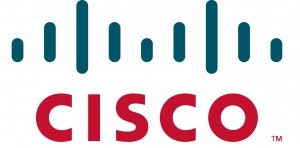
Not the best, but good
For the third quarter of fiscal year 2013, Cisco Systems, Inc. (NASDAQ:CSCO) reported net sales to the tune of $12.2 billion (growth of 5% year over year) and non-GAAP EPS of $0.51, which narrowly beat the Street estimate. As CEO John.T.Chambers pointed out in the earnings conference call, the company achieved a commendable performance in US and emerging markets. It scored a double digit growth on a year over year basis in these markets. The Street reciprocated well after the earnings call, with trading volumes increasing by almost 250% and Cisco’s share price shooting up by approximately 15%.
Results for the quarter were aligned with the financial guidance given by the company a quarter earlier, thereby enhancing investor confidence in the stock. On top of delivering a commendable performance, the company gave its investors another reason to celebrate: it returned $1.8 billion to its shareholders in the quarter, which included $860 million by way of share repurchase and $905 million through quarterly dividends. Thus, Cisco Systems, Inc. (NASDAQ:CSCO) scored high on both the counts, i.e achieving robust results as well as creating value for shareholders.
A glance through the quarterly results definitely gives a flowery picture considering important metrics like revenue growth, EPS, operating margin and free cash flow. But, as with any business, there are potential risks that get camouflaged by a praiseworthy state of affairs. Before going into a discussion on business risks let us first take a look at Cisco’s competitors to better understand the industry.
Industry rivals
Cisco Systems, Inc. (NASDAQ:CSCO) leads the networking and communications industry with market cap of a whopping $127 billion, which gives it various advantages like sophisticated R&D, stable client base and economies of scale in production. The company faces direct competition from Avaya, which merged with Sierra Merger Corp in 2007. For the 2nd quarter of fiscal 2013, Avaya reported revenue of $1.12 billion (down 11.1% from prior period quarter) and adjusted EBITDA of $172 million, a decrease of 14% from 2012.
As it can be seen from the results, Avaya could not successfully sustain the challenges of a sluggish economic environment mainly because it lacks a robust presence across global markets as well as a reasonable size of operations. A slowdown in growth was spotted for both enterprises in the Asian markets.
Ericsson (ADR) (NASDAQ:ERIC), with a market cap close to $39 billion, provides networking solutions through its product and services to its customers, who include telecom operators, utilities industry, automotive, etc. In terms of key balance sheet metrics, DSO, or days sales outstanding, stood at 108 days, reflecting a poor collection system. In fact, the DSO in Q1 2013 was higher than any of the previous four quarters. Cash flow from operating activities was negative in the quarter mainly due to increase in working capital requirement.
Another distant competitor for Cisco Systems, Inc. (NASDAQ:CSCO) is Alcatel Lucent SA (ADR) (NYSE:ALU), a global telecommunications equipment company. A major area of concern in Alcatel Lucent SA (ADR) (NYSE:ALU)’s results was generation of free cash flow that got hit by negative changes in working capital. Hence, management needs to frame appropriate strategies for effective working capital management in order to maintain sufficient cash flow levels. As in the case of Avaya and Cisco, Alcatel Lucent SA (ADR) (NYSE:ALU) also faced a negative trend in the Asian markets, sending its revenue down by 5.8% in the region.
